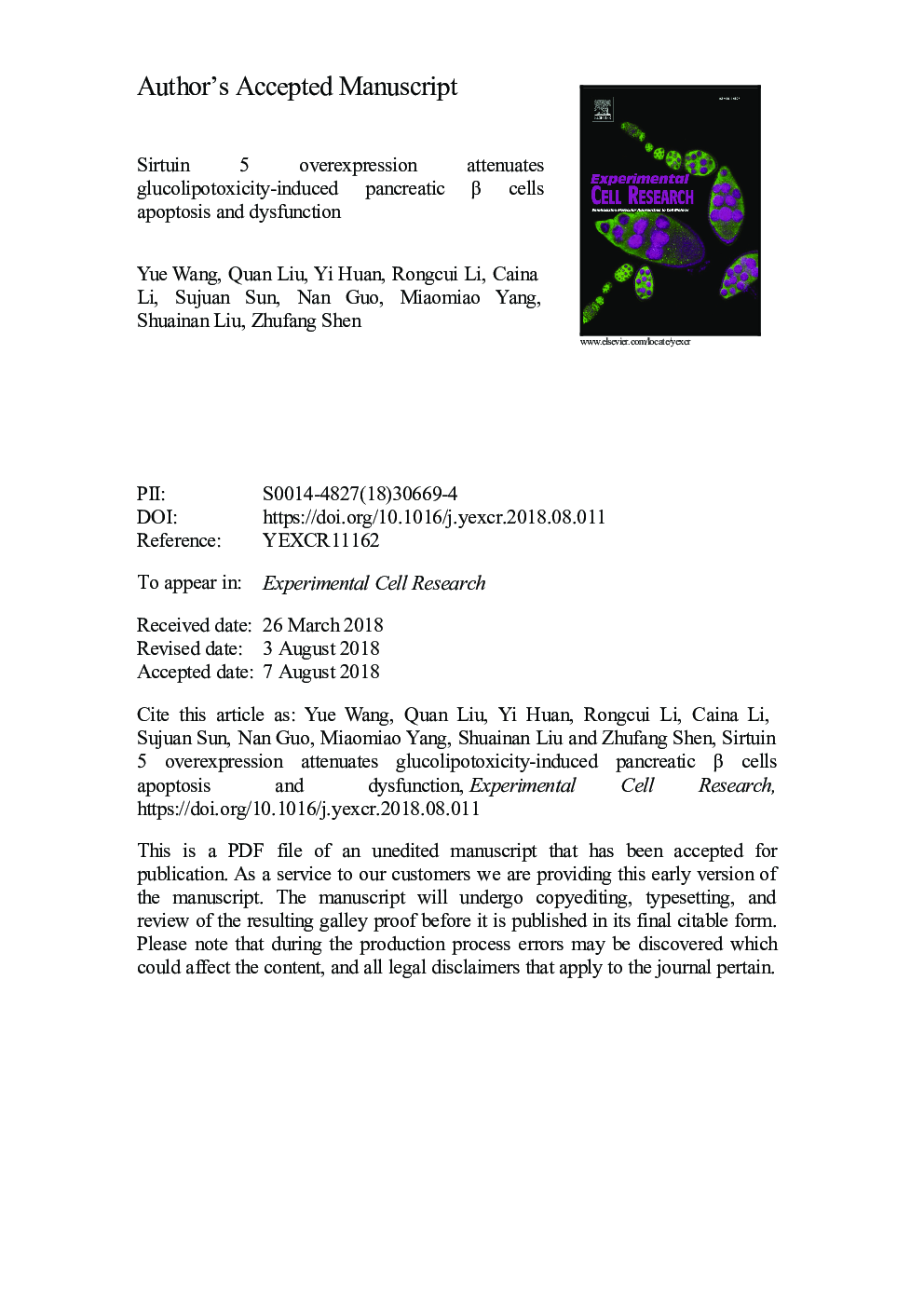| Article ID | Journal | Published Year | Pages | File Type |
|---|---|---|---|---|
| 8962169 | Experimental Cell Research | 2018 | 37 Pages |
Abstract
Recently, SIRT5 was reported to be a predominant desuccinylase and demalonylase in mitochondria. Ablation of SIRT5 enhances the systemic succinylation and malonylation of mitochondrial proteins, including various metabolic enzymes; however, its function in pancreatic β cells has not yet been clarified. In this study, we evaluated the effects of SIRT5 overexpression on glucolipotoxicity-induced apoptosis in β cell lines. Full-length SIRT5, which preferentially targeted to mitochondria and partially to the nucleus and cytoplasm, was overexpressed in NIT-1 cells. Chronic exposure to excess palmitate and glucose (High-PA-G) induced apoptosis and suppressed glucose-stimulated insulin secretion in β cells. SIRT5 overexpression significantly alleviated apoptosis under the High-PA-G condition, accompanied by suppressed Caspase 3 activity and reduced malondialdehyde levels. SIRT5 overexpression also improved β cell secretory capacity in response to glucose under the High-PA-G condition, suggesting its protective role in β cell function. Furthermore, SIRT5 overexpression reversed the decreasing trend of anti-apoptotic factors BCL-2 and BCL-XL expression under High-PA-G condition. Further regulation mechanisms between SIRT5 and these anti-apoptotic factors remains to be explored in future studies. Our data reveal that SIRT5 is a potentially protective factor for pancreatic β cells against glucolipotoxicity-induced apoptosis and cell dysfunction.
Related Topics
Life Sciences
Biochemistry, Genetics and Molecular Biology
Cancer Research
Authors
Yue Wang, Quan Liu, Yi Huan, Rongcui Li, Caina Li, Sujuan Sun, Nan Guo, Miaomiao Yang, Shuainan Liu, Zhufang Shen,
